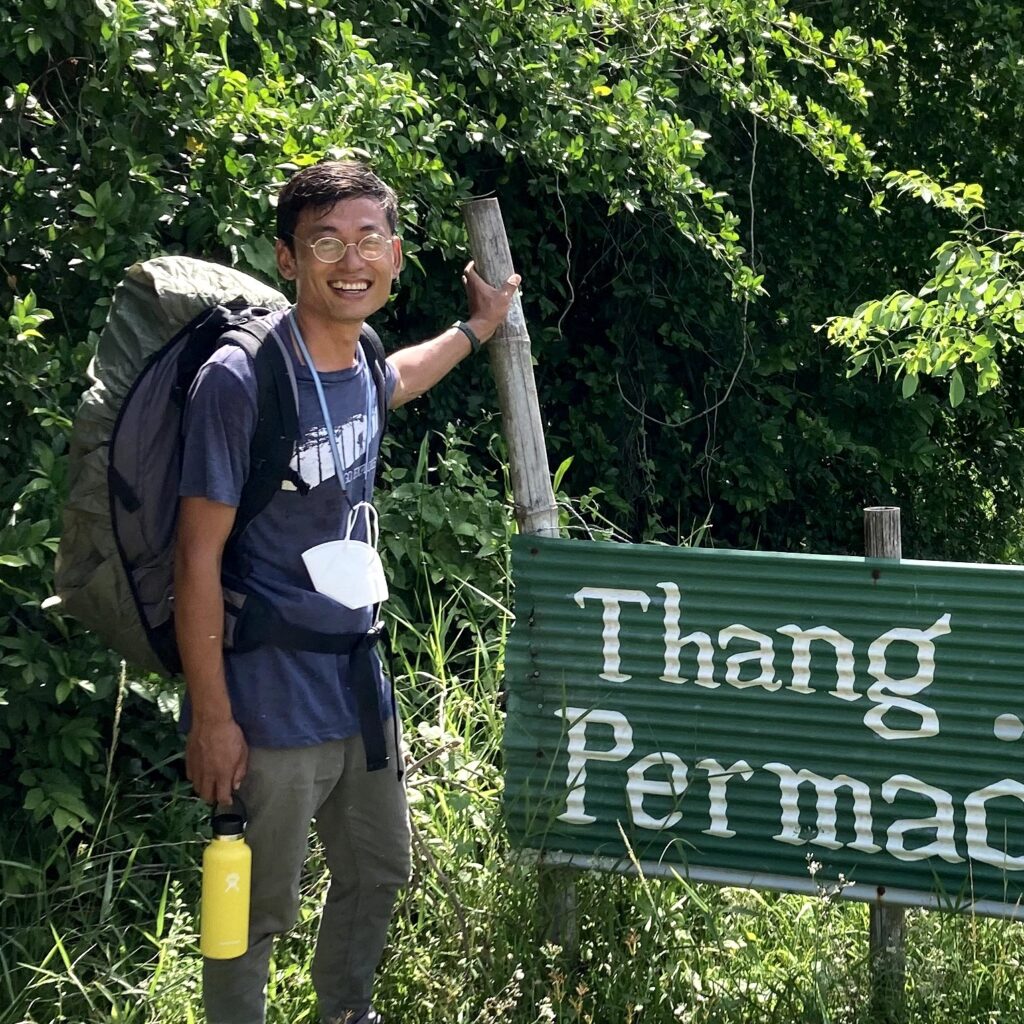Why the narratives we choose matter
Dear Reader,
In the ever-changing tapestry of our world, the complex threads of climate change, migration, and conflict are tightly intertwined, creating a complex narrative that demands our attention and understanding.
As we delve into this edition, we take a closer look into the impact of climate change on global migration patterns, shedding light on Elahe Zivardar’s story and on the importance of choosing a “lens of justice and solidarity” when addressing those.
We hope to foster a deeper understanding of these intricate relationships, igniting conversations that inspire positive change and building a future where the impact of climate change is met with resilience, compassion, and sustainable solutions.
As usual, you’ll find a few recommendations at the end of this email, including a podcast about the legacy of colonialism within the fashion industry.
Happy reading,
The Livism Team
Climate-driven migration: A personal perspective
By Elahe Zivardar, an Iranian architect, artist, journalist and documentary filmmaker based in the US. She was held on Nauru from 2013 to 2019.
In 2013, I fled Iran, got into a boat from Indonesia, and headed to Australia to seek asylum. Instead of receiving help or support, I was imprisoned on the remote and impoverished Pacific island of Nauru for six years, by the Australian government. But today, I live and work in the United States as a graduate student in architecture, artist, filmmaker, and journalist. Through my art, I communicate my story to the world because our words have meaning and power. Words can make the difference between hope or hatred, freedom or fear.
So when I read dehumanising headlines about climate and migration, using harmful terms like “swarms”, “floods”, or “biblical proportions” of people, I know something is wrong. Climate change affects all of us but especially communities on the frontlines of climate breakdown where sometimes families have no other choice but to leave their homes for safety. Just like I did.
When I left, the last thing I expected was a prison. The offshore detention centre on Nauru was a place designed to torture asylum seekers by denying us our human rights and detaining us indefinitely. We went without clean water and electricity for days at a time. The environment was polluted with heavy metals because we were imprisoned inside a former phosphate mine. We lived in plastic tents surrounded by toxic black mold and cadmium laced dust from the nearby phosphate processing plants. There was asbestos dumped next to our living quarters.
Despite the health conditions and poisons we were subjected to, we were routinely denied medical treatment until our conditions worsened and twelve of us died from this lack of treatment. All of this harm was inflicted on small children and pregnant women as well. All of this was done with the full knowledge of the Australian authorities.
I believe it is my responsibility to warn against adopting such policies and deliberately torturing vulnerable people. But we all have the responsibility and a role to ensure safe pathways and care for people on the move. For too long, the climate movement in the Global North has failed to stand with us, often using threat-based language against migrants in a cynical attempt to motivate climate action from Global North governments – rather than fighting for climate justice for all. But it’s not too late and it starts with the words we use.
In a world grappling with the intertwined challenges of climate change and displacement, the narratives we choose matter. Through a lens of justice and solidarity, we can have open dialogue that goes beyond the polarising narratives often found in the media. We can talk about real-world solutions that embrace both the right to stay and the right to move with dignity. Migration is part of the solution to the climate crisis, ensuring that people are able to adapt to a changing environment.
In order to help climate communicators learn more about the layered realities of climate-linked migration and messaging that works, a group of climate and immigrant justice groups have developed “Connecting Climate Justice and Migrant Justice: A Guide to Countering Dangerous narratives.” Please read this guide and learn how you can centre justice when you discuss climate-driven migration and help paint a fuller picture of life in a climate changed world.
Spotlight on: Connecting Climate Justice & Migrant Justice
This animated video by Sophia Negri is narrated by Elahe Zivardar. It was made to launch the ‘Connecting Climate Justice & Migrant Justice: A Guide to Countering Dangerous Narratives’ report, and is co-branded by JCWI, 350.org, Migrants Organise, Climate Justice Coalition, NPNA, Climate and Migration Coalition, IRAP, Common Defense, Pacific Islands Students Fighting Climate Change, and Friends of the Earth.
In case you missed it
G20 countries are failing to integrate air pollution into their climate plans, a new study finds.
“When you’re born Indigenous, you’re born an activist,” says Sônia Guajaraja in an interview about becoming Brazil’s first Minister for Indigenous Peoples.
Rain, storms, drought: a new EU project is saving ancient heritage from climate change, finding ways to arrest damage at numerous archaeological sites.
Given India’s historically lower emissions, economic growth has taken precedence over climate concerns, which raises climate justice concerns, such as its effect on inequality.
Despite the vast majority of fashion brands failing to address their environmental impact head on, a few key sustainability moments are worth checking.
Cellist Yo-Yo Ma joined a group of Alaska Natives, artists and environmental activists last month in Fairbanks for a performance that expresses Indigenous peoples’ grief over impacts of climate change.
As weather extremes worsen due to climate change, migrants’ journeys will likely only become riskier.
When climate protesters from @renovate.switzerland interrupted a conductor’s concert, his reaction surprised everyone – even the protesters.
Recommendations
What we’re listening to
As you will discover in this episode of The New Paris, the legacy of colonialism lives on within the fashion industry, and not only in France. Over two episodes, a fashion historian, environmental journalists, and activists help Lindsey Tramuta unpack the darker side of la mode.
In this episode of The New Paris, Lindsey Tramuta is joined by Aja Barber, Khémäis Ben Lakhdar, and Esha Chhabra to talk about accountability, transparency, decolonization, brands that are doing things right, and slowing down our own consumption as a means to extract ourselves from the performative cycle of fashion.
What we’re attending
When? Thursday, 2 November 02:00 – 03:00 CET
Where? Online
To launch Indigenous Heritage Month, join Climate Reality Bay Area chapter’s YouTube premiere of two Indigenous Voices film events. This 30-minute programme will feature condensed versions of “Land Back and Climate Justice in Marin County” and “The Willow Project and Ambler Road: Indigenous Resistance to Extraction and Eco-Colonialism in Alaska.
When? Thursday, 26 October 01:00 – 02:00 CEST
Where? Online
Over the last decade, hurricanes have intensified, wildfires have burned stronger, and heat waves have baked cities. These events can only be expected to get worse in the next decades. Join this six-week exploration of how faith communities can become a force for climate resilience.
What we’re reading
This thought-provoking anthology brings together today’s most respected and influential Black environmentalist voices — leaders who have cultivated the skill of listening to the Earth — to share the lessons they have learned.
- Heart to Heart: A Conversation on Love and Hope for Our Precious Planet by the Dalai Lama and Patrick McDonnell
A religious leader and a cartoonist team up to produce a beautifully illustrated book that serves as a prayer for compassion for the planet. With a galvanising message about the future of our planet, Heart to Heart calls for a Compassionate Revolution, reminding us that “we are indeed all members of a single family, sharing one little house.”








